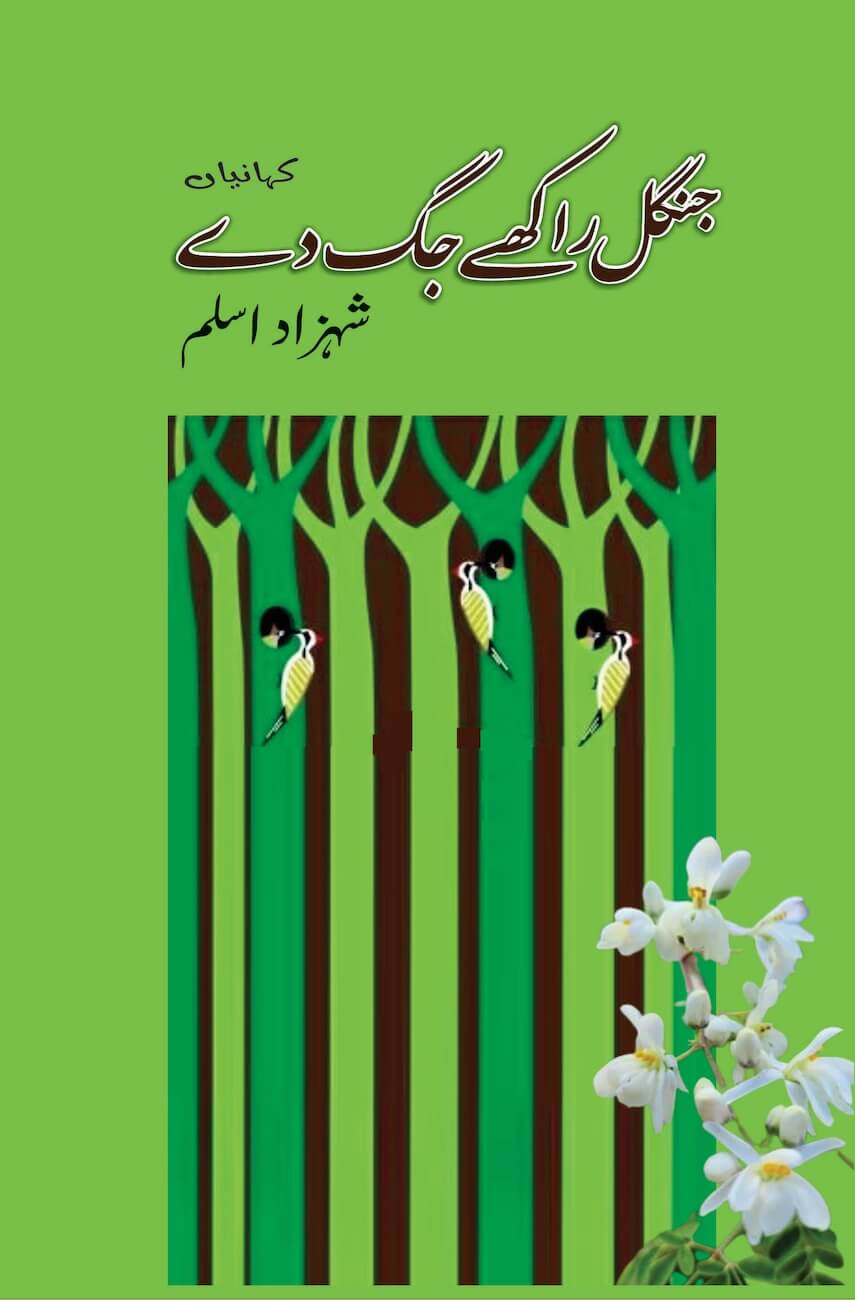
- Publisher: Saanjh Publications

‘Jungle Rakhey Jag De’ is Shahzad Aslam’s third collection of stories published in the Shahmukhi script. Thematically, the stories touch upon varied social, psychological, economic and cultural concerns. The narrative and the dialogues are at times absurd and satirical. The use of poetry, news, public demonstrations and memories make beautiful, stylistic features in their rendering.
In the title story, ‘Jungle Rakhey Jag De,‘ the “indiscriminate felling of trees,” the destruction of ecosystems and their terrible impacts are sensitively explored. Local village leader Chaudhary Karamdin is in a frenzy to cut down as many trees in a forest as he can. This forest is also a hiding place for Shere, Jani and their gangster companions who carry out nefarious activities in the surrounding area. With rapid deforestation and loss of animals, some trees ‘awaken.’ They begin to organize themselves and other forest dwellers in a collective effort to protect themselves. Their personified voices are powerful. “Finally those trees united to ask for help from Shere (gangster), Bohar (banyan), the Sarpanch of trees (the leader trees) and animals and birds near the rest house…They talked to the mulberry trees which remained silent…It was decided that Suhanjana(‘moringa’ or ‘drumstick’) could talk to humans…Parrots, doves, pheasants and sparrows sat on the branches of Suhanjana.” (p. 42).
The story, ‘Mitti de Bhande‘ shows that human relationships are changing. Now there is less love and support, and more selfishness and individual greed. In search of the warmth of relationships and the memory of the smell of soil in his native land, Qasim leaves his business in Germany to return to his homeland. He is troubled by the shallow interactions and the lack of sincerity among relatives and friends. Deeply disappointed, he returns to Germany.
“The descriptions of the personified vegetation and forest creatures are vivid. Three-dimensional, like in a movie.”
–Shahmukhi Jury
“The stories have local and global relevance. Contemporary, with a call to action.”
-Central Jury
